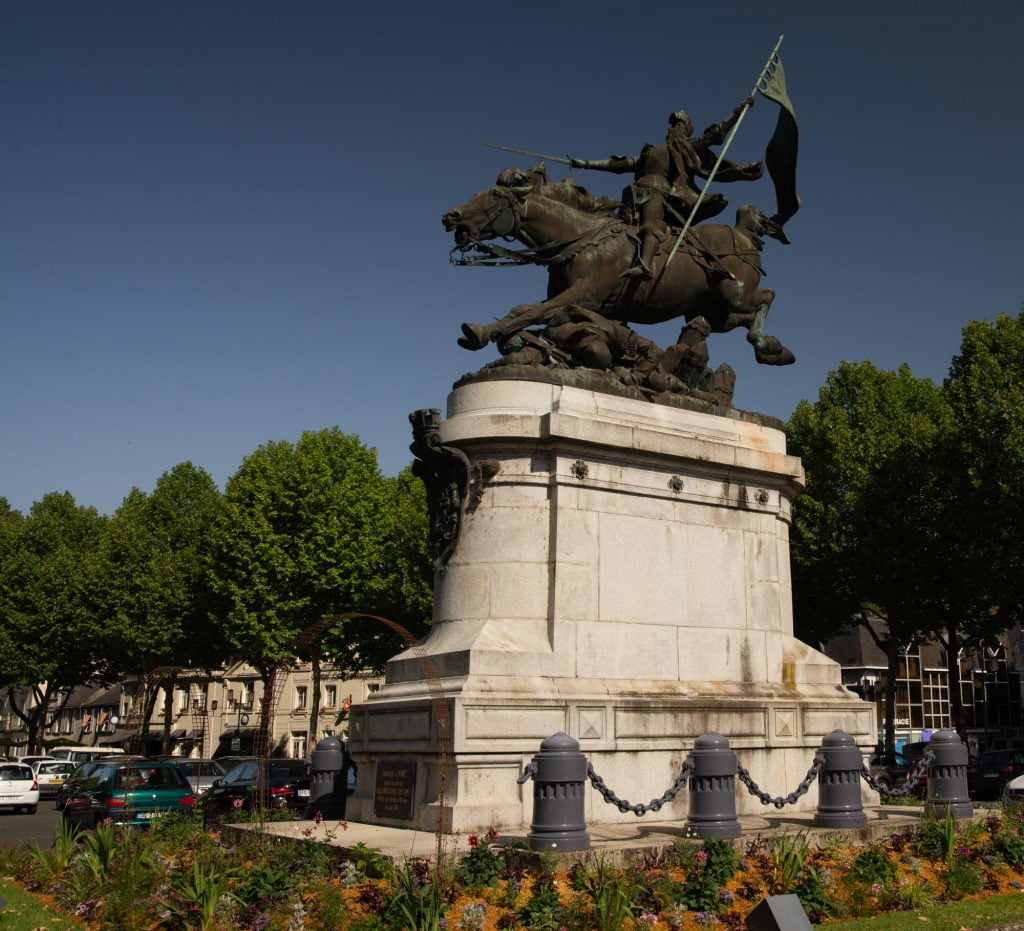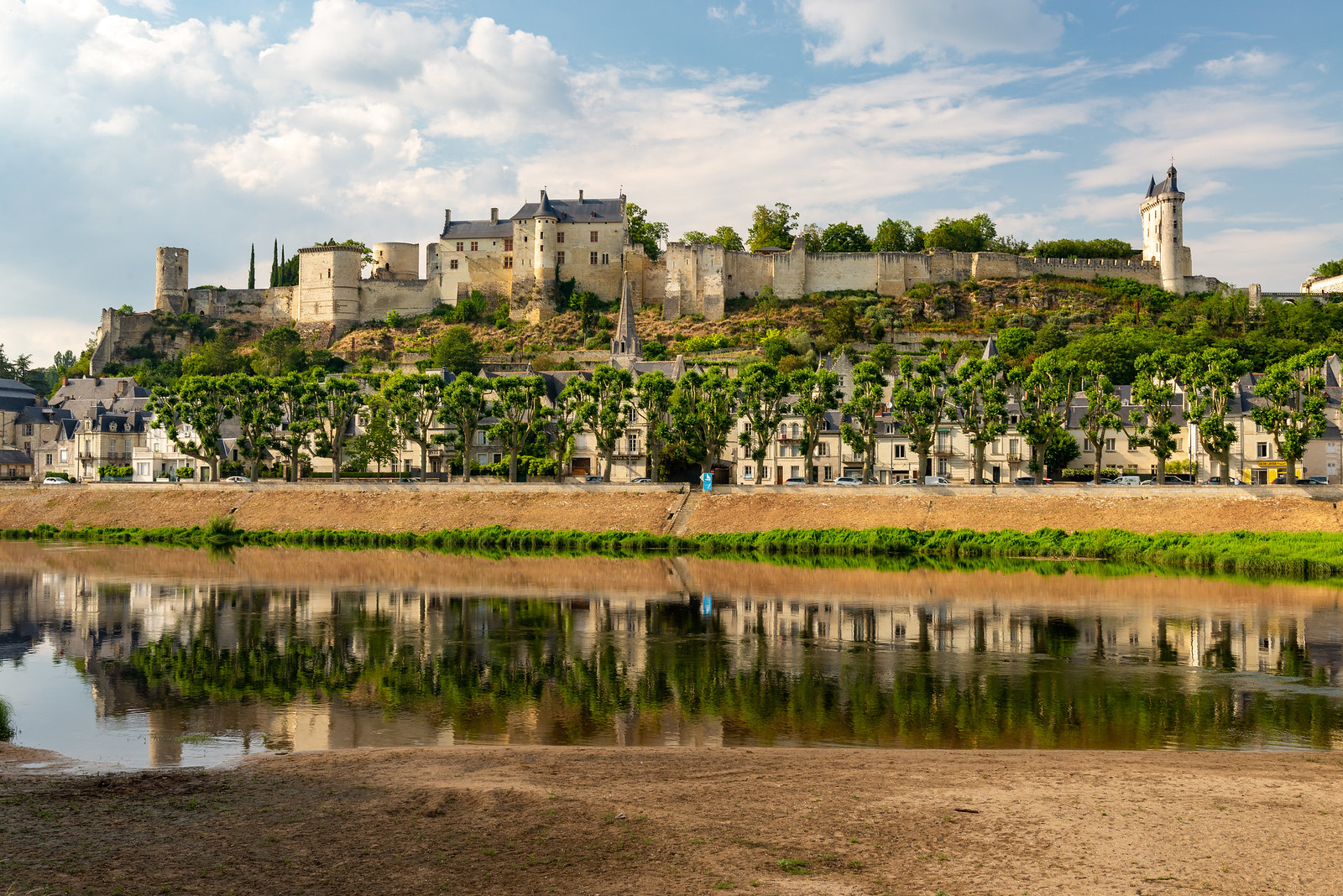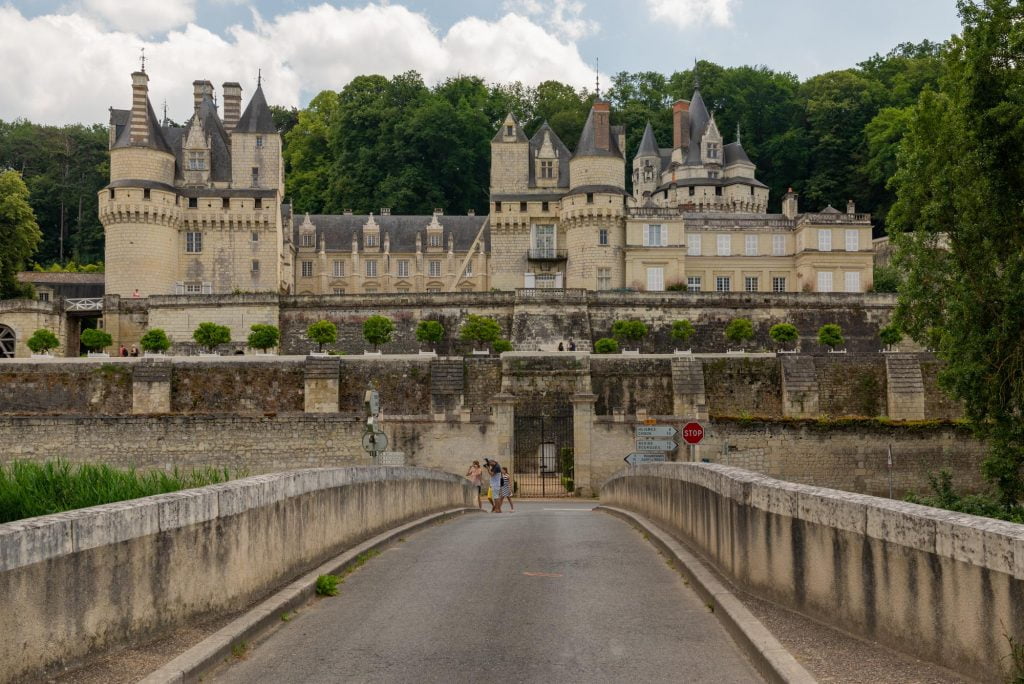25 June
Today marked the longest leg of our trip so far, 60km (37 miles) to Chinon. Along the way we stopped at Chateau Villandry for a tour and at Chateau d’Ussé for a quick photo stop.
First Stop: Château Villandry
Our first stop of the day was at Château Villandry. Built in 1536, it was the last of the great chateaux built on the Loire river during the Renaissance. The Château was built on the foundations of a 12th-century fortress in which, on July 4, 1189, King Henry II of England admitted defeat before King Philip Auguste of France.
Ok, to be honest, this was my second stop of the day. My first stop was Hotel Colbert, the hotel we stayed in last night. This morning I put some sunscreen on to prepare for our trip and took my Apple Watch off. About 15 minutes outside of Tours, I realized I had left it in the hotel room. I saw a look on Kathrin’s face that said, “I really don’t want to go back to the hotel.”, and I didn’t want her to suffer my mistake. I suggested that she continue on and I will ride as fast as I can to retrieve my watch. She quickly agreed to that. After calling the hotel to inform them, I was off. My bike’s navigation computer took me on a route through Tours that we had not seen before. It was actually a very scenic route through the town, passing by the opera house, a very inviting boulevard with trees and cafés. Arriving at the hotel, the host handed me the key, and I ran up the two flights of stairs, grabbed my watch, and got back on my bike. By the time I caught back up with Kathrin, she was waiting for me at the Château.
The most notable feature of this castle was the gardens. There are several kinds, an ornamental garden, a vegetable garden, an herb garden, a sun garden, and a water garden.
The vegetable garden, or kitchen garden, is made up of nine similarly sized squares but with different geometric patterns. These squares are planted with vegetables of alternating colors to give the illusion of a multicolored chessboard. Kitchen gardens actually date back to the Middle Ages, where monks would lay out their gardens in geometric shapes, usually a cross. Then along came the Italians who gave the monastic kitchen garden some ornamental features such as fountains, trees, and square flower beds. During the French Renaissance the two gardens were combined to make the garden they needed for the roses and vegetables, and voila, the decorative kitchen garden was born. In the photo below you can see the ornamental garden in the foreground, the kitchen garden directly behind it, and the sun garden to the left. I have to say I was inspired after seeing these gardens but don’t expect much of our garden next summer 😉
I’ll let you in on a little secret. We took our picnic lunch in the castle gardens. When we bought the tickets, the clerk asked if she could see inside the Kathrin’s bag; we assumed to check for dangerous items. As Kathrin held it out, she asked if we had a picnic in it. Kathrin quickly said no, which satisfied the woman. After walking around and admiring the gardens, we found a bench in a quiet corner in an upper-level garden to enjoy our picnic lunch in secret.
Hey, What’s That?
With a full stomach, we jumped back on our bikes to continue on to Chinon. After an hour of biking along our merry way, we looked over to the left and noticed another Château, Château d’Usse. It’s an impressive castle. In fact, its beauty inspired Charles Perrault to write the fairytale Sleeping Beauty. This is one of the few chateaux in the Loire Valley that is still privately owned.
On to Chinon…
As we traveled further west towards Chinon, I noticed a slow shift in the architecture. Limestone became the predominant building material. We still saw some timber-framed houses, but they were not as plentiful as in Tours, Amboise, and the other towns we had seen. The limestone of the Loire Valley region is called Tuffeau. Eventually, we came to a rest stop that had a memorial to the Tuffeau workers of the area.


Chinon is actually on the Vienne River, about 6 miles/10km from where it joins the Loire. This made Chinon a very strategic town since the Middle Ages. However, Chinon’s major claim to fame came in 1429 when King Charles VII assembled the Estates General and Joan of Arc prevailed upon him to give her an army so she could liberate Orleans from the British siege.
History lesson aside, Chinon has a lovely blend of old and new. The ancient buildings have been refurbished and now are the homes of bakeries, boutique stores, etc. It was a pleasant ride through the town. The next morning we planned on visiting the castle before leaving town. Kathrin found an elevator on Google Maps that takes people and bikes up most of the hill to make traveling there easier. Unfortunately, we didn’t find the elevator, so we ended up going up a very steep street. Thank God for e-bikes! Once we made it to the castle, the gate was closed. We were too early. Oh well, we had a schedule. On the way back down the hill, we found the elevator 😆 bad timing, but we took it anyway.
The castle offers a magnificent view of the river and city (if you’re there during opening hours!)
Last, but not least, our wonderful hotel
We stayed in the Hotel Agnes Sorel. Here again, we were impressed. The hostess was a very nice, friendly person. I could tell from my interaction with her and also watching her interaction with the other guests that she took great care to ensure her guests’ comfort and satisfaction. It is nice to stay in a family-run hotel that takes pride in their establishment. That evening Kathrin and I ordered a bottle of wine from one of Chinon’s wineries and she brought it to us in the hotel’s courtyard along with a selection of snacks. It made for a pleasant end to the day of sightseeing.

You can see more of my pictures from this trip on my Flickr page.






Leave a Reply